Stone tools which were a vital technological invention of early humans, enabling them to do things like butchering. Oldowan and Acheulean stone tool technologies were collectively prevalent for millions of years; now it was time for our modern day students to try their hand at reliving their ancient ancestors’ ways of life. On Monday Dr. Hildebrand led the students in a stone tool knapping exercise and by the end, all the students were able to make a stone tool from their phonolite cores.
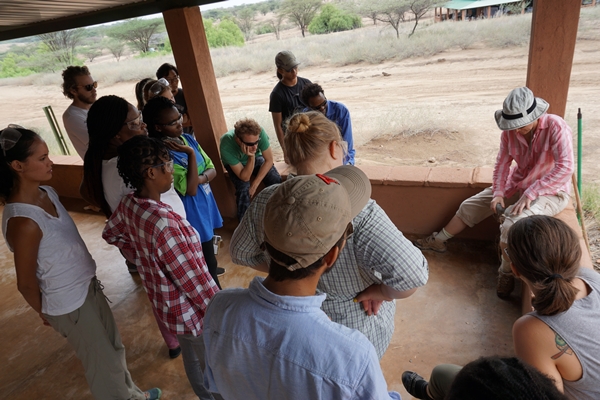
Dr. Hildebrand demonstrates on how to knap stone tools (Photo: Lucy)
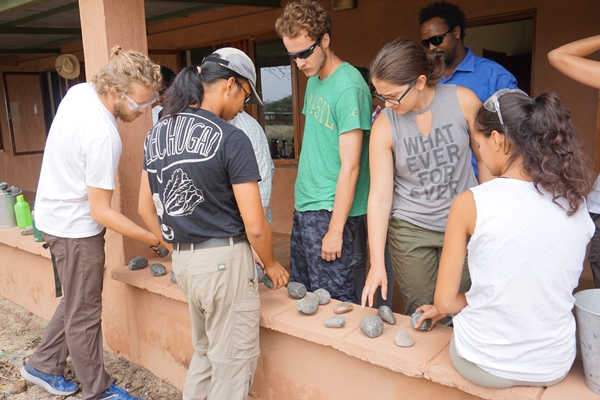
Students choosing their hammerstones for the knapping exercise (Photo: Lucy)
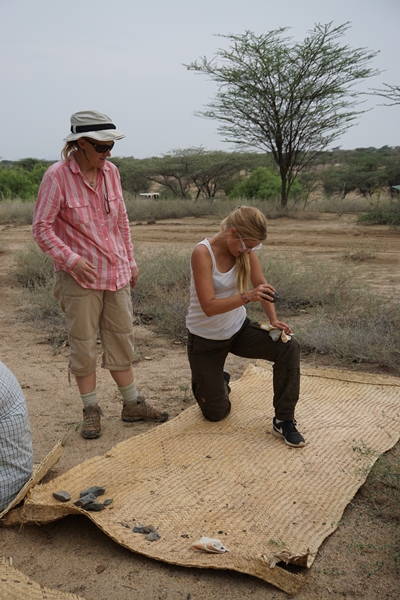
Dr. Hildebrand watches as Ulla tries her hand at knapping (Photo: Rosie Bryson)
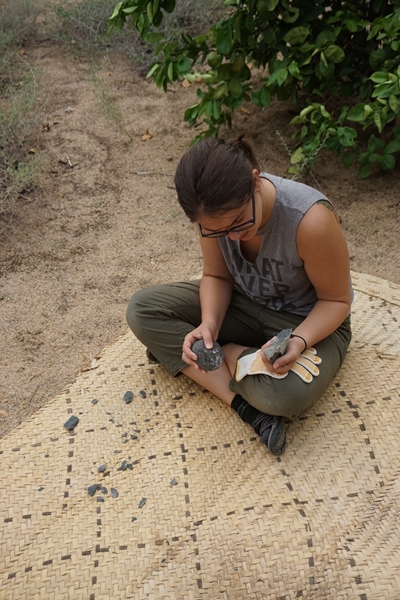
Gill assess her core for a good knapping angle (Photo: Rosie Bryson)
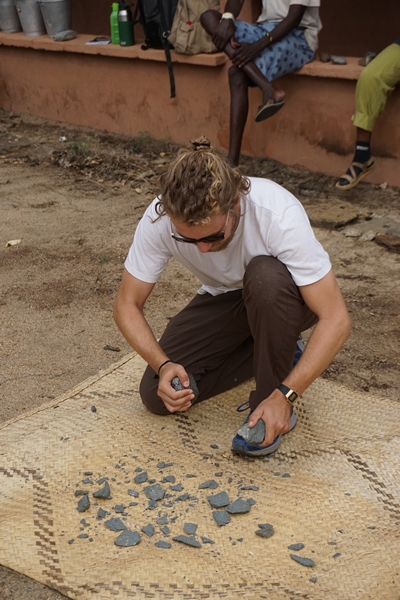
Tom working hard at his knapping (Photo: Lucy)
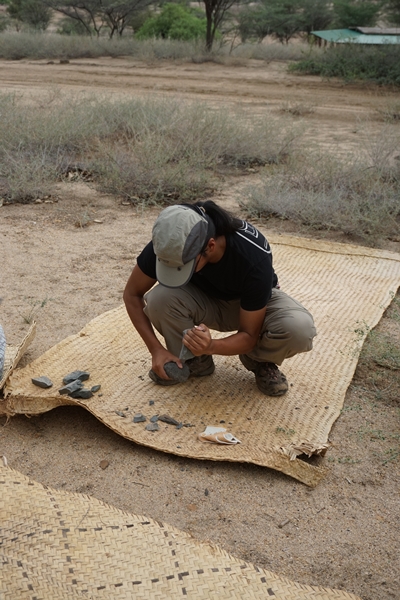
Rohan really focused on his knapping (Photo: Rosie Bryson)
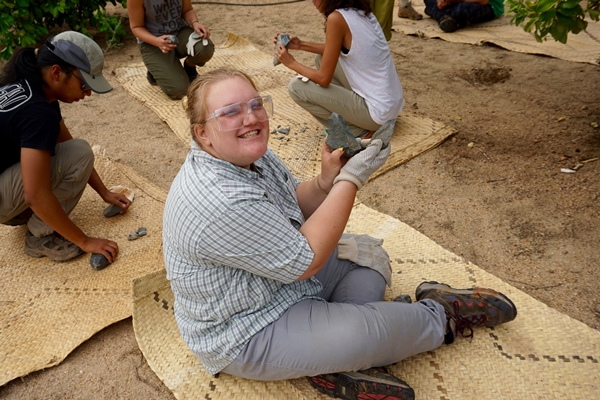
Meaghan is happy after succesfully knapping a flake (Photo: Rosie Bryson)
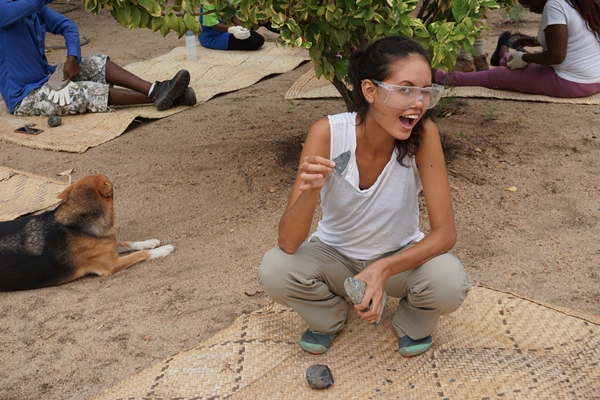
Regina shows off her flake (Photo: Rosie Bryson)
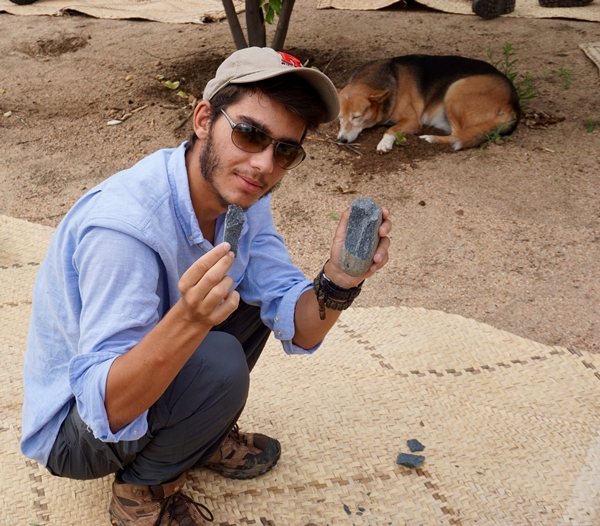
Matt holding up his flake (Photo: Rosie Bryson)
On Tuesday, the students were introduced to stone tools illustration. Stone tools illustrations are often the most informative for archaeologists who do not have access to the actual stone tools since the lines and symbols in the drawing contain technological information which tells the audience how the artefact depicted was made. Making these drawings is an excellent way of learning to recognise and understand this technological information for the students. In their case, the students illustrated the stone tools they had made on Monday.

Meaghan’s illustration of her stone tool (Photo: Lucy)
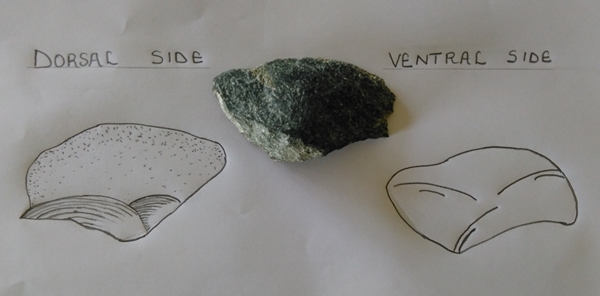
Pauline’s Illustration of her flake (Photo: Lucy)
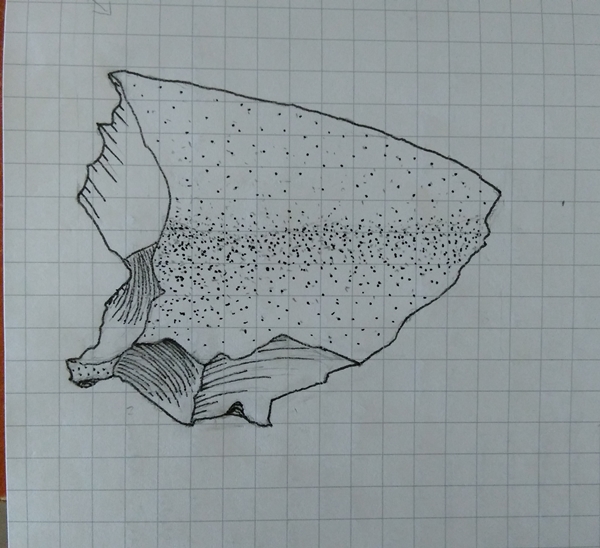
Matt’s illustration of his stone tool (Photo:Lucy)
On Wednesday morning, we left for our 3 day Nariokotome camping trip. En route, we made a stop at 2 archaeological sites. First was the Kalokol pillar site where Dr. Hildebrand has previously excavated as part of her research on the early spread of pastoralism through Africa. This monument was first created during the Early Holocene and still holds significance to the Turkana people today, who place large pebbles in small piles at the site as a sign of respect. In the afternoon, the students were introduced to the Lokalalei archeological site; a site which has yielded the Oldowan stone tools. Here the students practiced surface survey using the flagging method in order to determine where the stone tools are coming from. In archaeology, this method is crucial in determining where excavation trenches are placed. After this, we headed to our camp site to set up camp.
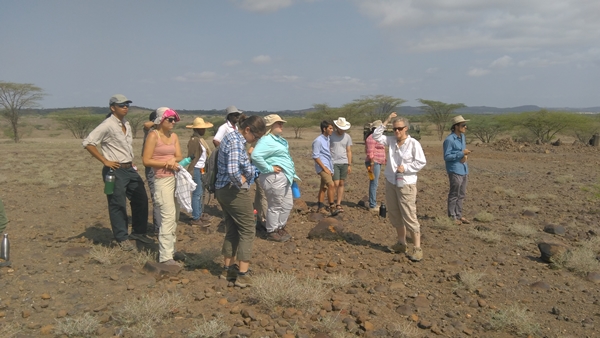
Dr. Hildebrand explains on the significance of the pillar sites to the students (Photo: Lucy)
On Thursday, we headed out to Kokiselei where there are a number of early stone age sites namely K1, K2, K3, K4, K5 and K6. We started our tour around the sites at K4 which was particularly interesting to the students since it is an Acheulean site. Here the students were much more effective in their surface survey which they had already practised at Lokalalei. We also visited K5 and K6 before heading out to the Kokiselei Laga for our lunch after which the students collected Phonolite cores for next field school stone tools knapping exercise. In the afternoon, the students enjoyed a swim at the Nariokotome beach.

The students being introduced to the Lokalalei site by Dr. Hildebrand (Photo: Lucy)

Dr Hildebrand gives a brief introduction of the Kokiselei sites to the students (Photo: Lucy)
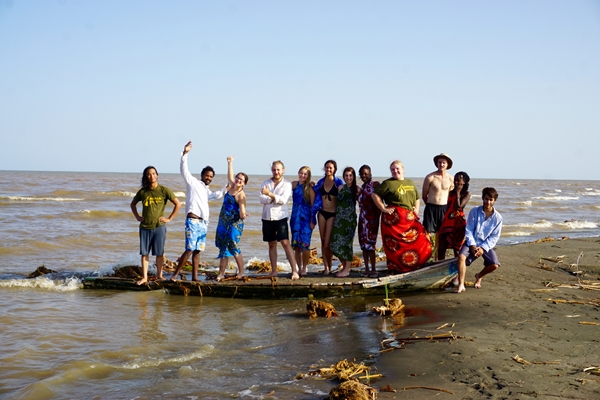
The students at the beach in Nariokotome (Photo: Rosie Bryson)
On Friday morning, we broke camp and set off for TBI but we also made 2 stops enroute. First was the site of Nariokotome Boy where the most complete Homo erectus specimen was uncovered. Francis recounted to the students that at the time of the discovery he was a young boy watching with intent curiosity as the palaeoanthropologists worked there. We also stopped at the Eliye Springs Resort where we had our lunch and the students enjoyed an afternoon swim before heading back to TBI.
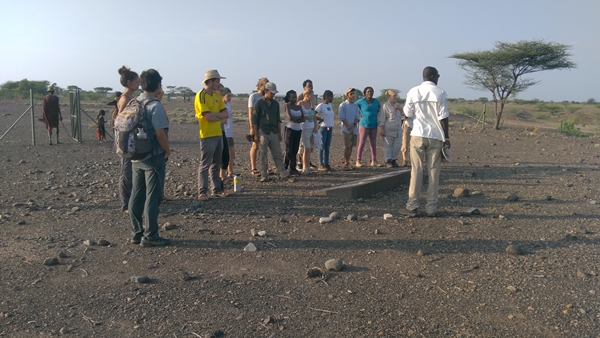
Francis explaining on how the Turkana boy was discovered at the Nariokotome boy site (Photo: Lucy)
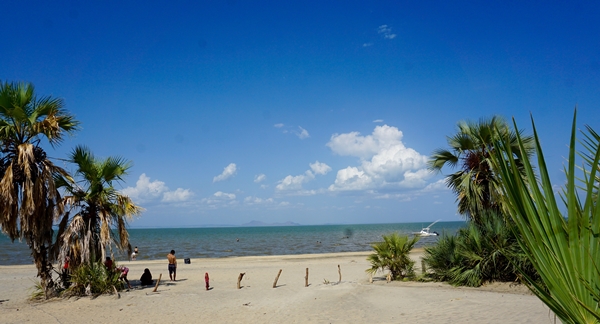
The serene Eliye Springs Beach (Photo: Rosie Bryson)





